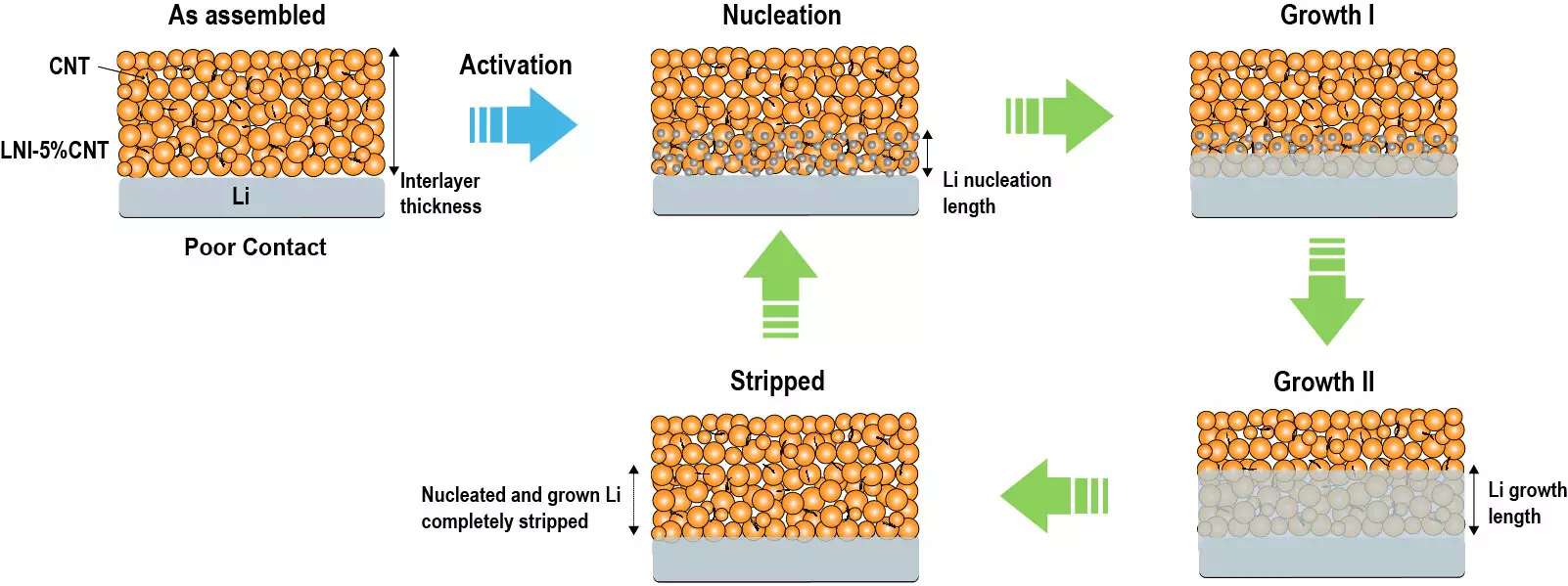In the ever-evolving world of electronics, engineers and chemists have been continuously striving to develop battery technologies that can meet the increasing demands of the industry. One of the emerging types of batteries is the all-solid-state battery (ASSB), which utilizes a solid electrolyte sandwiched between two electrodes. This innovative design has the potential to address the limitations of conventional lithium-ion batteries (LiBs) by providing higher energy densities and improved safety. However, despite their promising properties, all-solid-state lithium-metal batteries (ASSLBs) have yet to be widely adopted due to issues such as the growth of Li dendrites and high interface resistance.
Recently, a team of researchers at the University of Maryland introduced a revolutionary principle for designing safer and more efficient ASSLBs. Their groundbreaking work, published in Nature Energy, offers a new approach that could pave the way for the development of powerful fuel cells for electric vehicles and large robotic systems. Unlike previous attempts that relied on trial-and-error experiments, this study aims to establish an interface design principle that can guide the fabrication of multiple interlayers to fully address the lithium dendrite issue in all-solid-state batteries.
The key objective of the research was to explore a viable strategy to mitigate Li-dendrite growth in ASSLBs. The team proposed the incorporation of a special layer between the lithium anode and solid electrolyte in battery cells. However, the properties of the interlayer are critical for its effectiveness in tackling lithium dendrite issues. The researchers outlined several key characteristics that the interlayer should possess: lithiophobic nature (repelled by lithium metal), high ionic conductivity, slight electronic conductivity, and a porous structure.
To test their design principle, the researchers created a Li4SiO4@LiNi0.8Mn0.1Co0.1O2/Li6PS5Cl/20 µm-Li battery cell with an impressive area capacity of 2.2 mAh cm-2. In initial tests, these battery cells demonstrated remarkable performance, retaining 82.4% of their capacity after 350 operation cycles at a temperature of 60° C and a rate of 0.5 C. Unlike previous studies that lacked clear explanations for their underlying mechanisms, the success of this design principle lies in its ability to open up new opportunities for the development of safe batteries.
The design principle introduced by the University of Maryland researchers holds immense potential for a wide range of ASSBs. By effectively suppressing Li-dendrite formation, this principle has the power to enhance battery performance and accelerate the development of safe and highly efficient battery technologies containing solid electrolytes. Such advancements could pave the way for the widespread adoption of electric vehicles and other large-scale electronic systems. The researchers plan to further modify and verify the design principle by testing more interfaces and optimizing interface materials in future studies.
Engineers and researchers are constantly pushing the boundaries of battery technology, and the recent breakthrough in all-solid-state battery design marks an exciting milestone. The introduction of a new interface design principle that addresses the lithium dendrite issue in ASSLBs has the potential to revolutionize the industry. As this principle is tested and refined further, it could unlock a new era of safe and high-performing battery technologies that will shape the future of electronics.


Leave a Reply